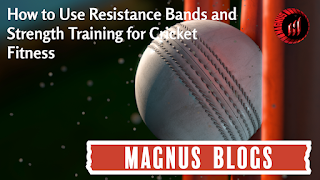The Laces Myth: Can the Way You Tie Your Cricket Shoes Affect Your Stability?
When we talk about cricket equipment, we often focus on bats, pads, gloves, and helmets. But rarely do we stop to think about the seemingly simple act of tying our shoelaces. Can the way you lace your cricket shoes actually influence your performance? Surprisingly, yes. Let’s explore how something as ordinary as your lacing technique might be quietly impacting your stability and comfort on the field.
The Role of Footwork in Cricket
Cricket is a sport where footwork is everything—whether you're a batter dancing down the pitch to loft a spinner or a fast bowler charging in at full tilt. Your feet are your foundation. Any instability in your base can throw off your balance, timing, and execution.
Why Shoe Fit Matters
Cricket shoes are designed to provide grip, support, and shock absorption. But none of that matters if your shoes don’t fit securely. A loose shoe can cause your foot to shift mid-action, affecting your weight distribution and increasing the risk of blisters or even injury.
How Lacing Affects Fit
Laces control how snug your shoes feel. They lock the heel in place, keep the midfoot stable, and allow for movement at the toe box. Different lacing techniques can either enhance or undermine these functions.
Here are a few ways lacing impacts your cricket performance:
-
Heel Lock Lacing: Prevents your heel from lifting during sprints or bowling.
-
Wide Foot Lacing: Relieves pressure across the top of your foot if you have a broader foot.
-
High-Instep Lacing: Loosens pressure if your foot arches higher than average.
Improper lacing can also lead to hot spots—areas of discomfort due to concentrated friction—which can affect your mobility and decision-making during play.
Stability & Movement: The Hidden Connection
If your foot is unstable inside your shoe, you're more likely to lose traction during sharp turns, quick singles, or abrupt stops. This minor instability can cause hesitation or imbalance, which is the last thing you want in a competitive setting.
Real-World Observations
Many athletes unknowingly tie their laces in a way that restricts circulation or causes uneven tension. Cricket players, especially those on the move for long innings or extended spells, may begin to feel discomfort halfway through the match, not realizing their lacing is the culprit.
Best Practices for Lacing Cricket Shoes
-
Start Loose, Finish Firm: Begin lacing loosely at the toes and tighten gradually toward the ankle.
-
Use a Heel Lock (Runner's Loop): This provides extra ankle support without over-tightening.
-
Avoid Over-Tightening: This restricts blood flow and can lead to cramping.
-
Double Knot: Prevents laces from coming undone during crucial moments.
-
Re-Tie at Breaks: Feet swell slightly during long matches; adjust your lacing at intervals.
Cricket bat types, Cricket equipment in usa, Cricket equipment store, Cricket gloves, Cricket helmet, Cricket kit bags, Cricket retailers, Durable cricket gloves, English willow bats, Icc approved helmets., Kashmir willow cricket bat, Latest kashmir willow bat
.png)
.png)
.png)

Comments
Post a Comment